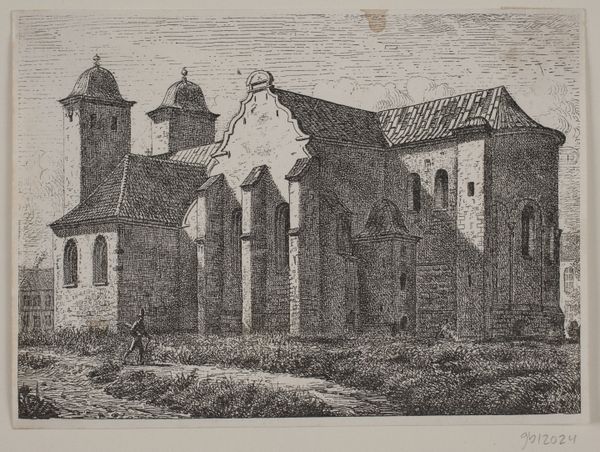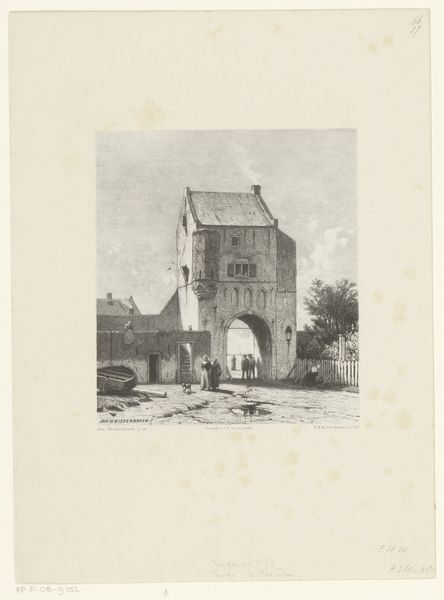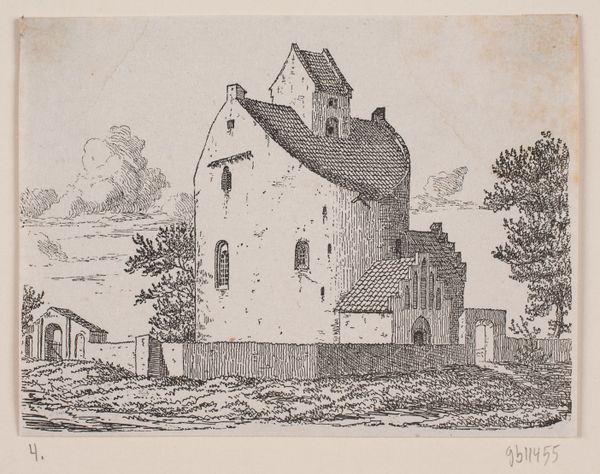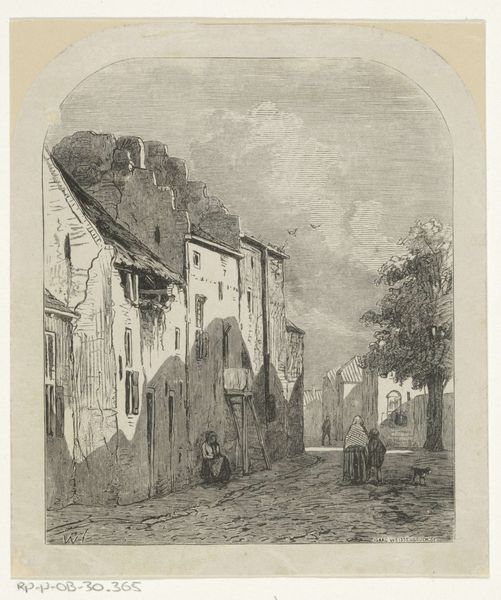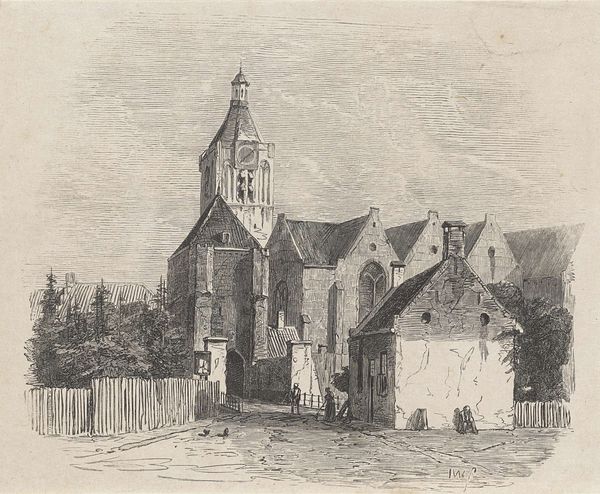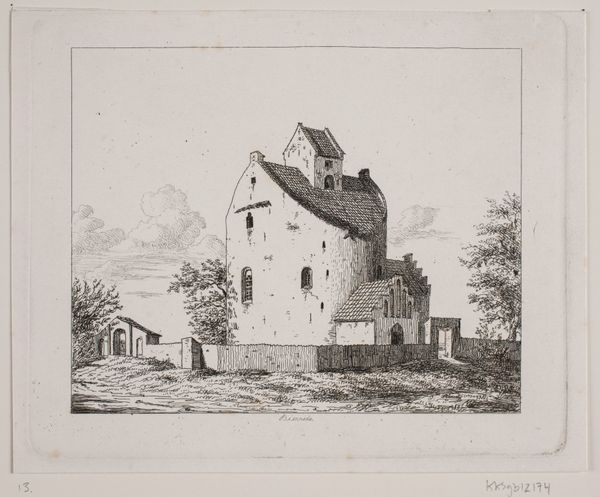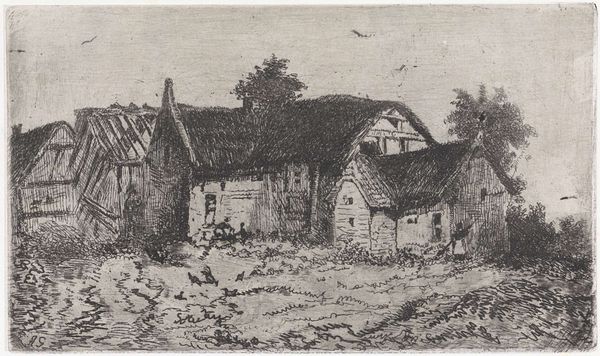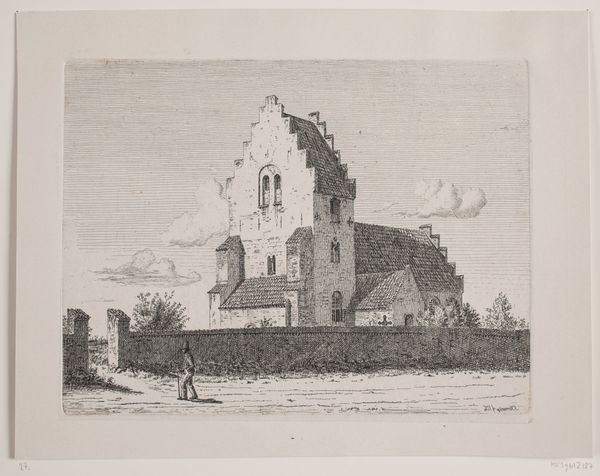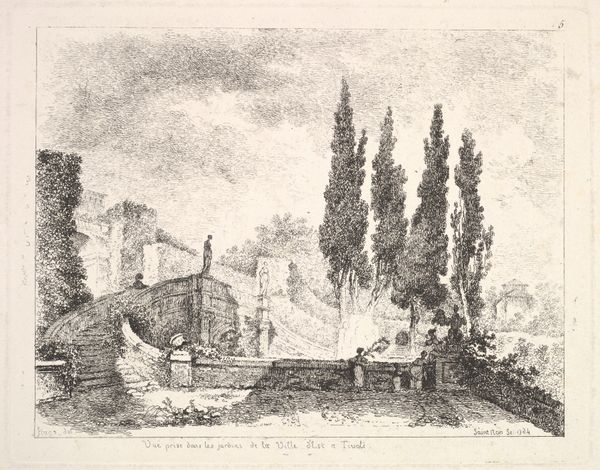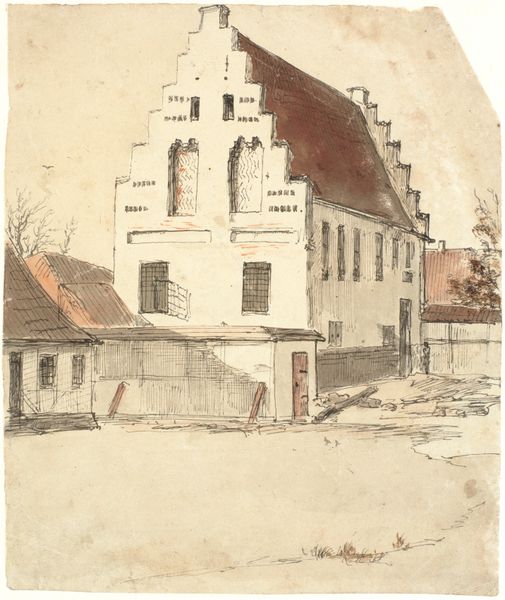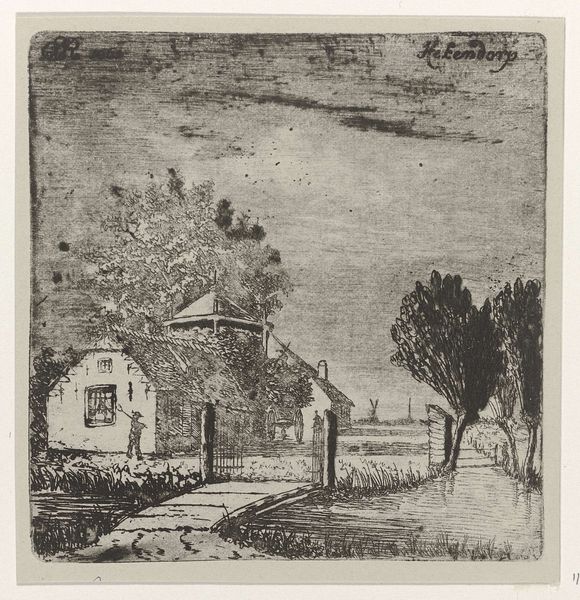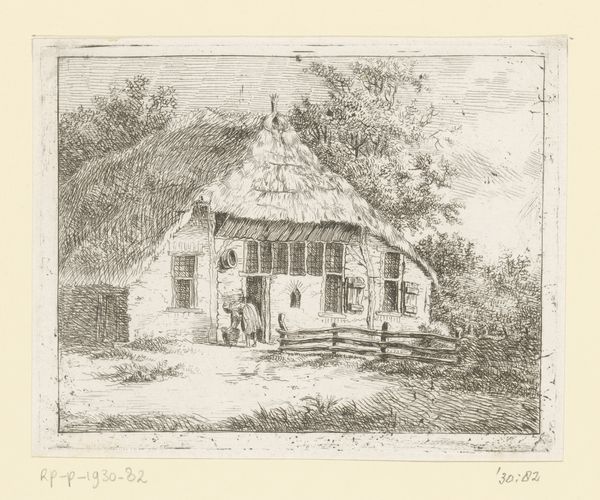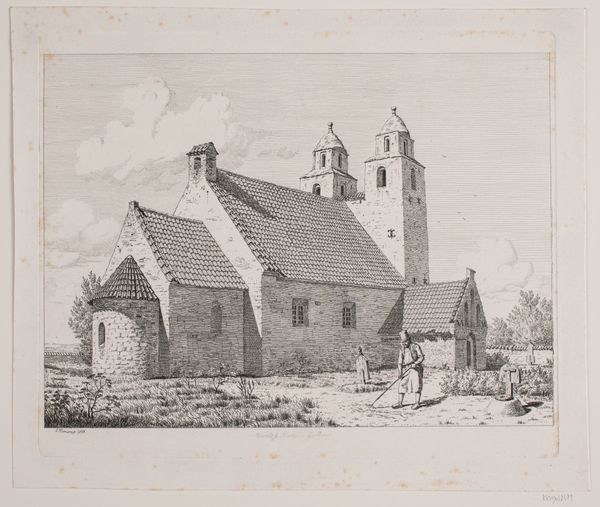
print, engraving, architecture
# print
#
pen sketch
#
old engraving style
#
cityscape
#
engraving
#
architecture
#
realism
Dimensions: height 155 mm, width 154 mm
Copyright: Rijks Museum: Open Domain
Curator: Well, here we have "Building with Two Figures by a Wall," crafted by Isaac Weissenbruch sometime between 1836 and 1912. It’s an engraving, housed here at the Rijksmuseum. Editor: There's a haunting beauty here, isn't there? Stark shadows, a sort of crumbling grandeur… like a memory fading at the edges. Curator: It does evoke a sense of the past. Weissenbruch was known for his realistic depictions of Dutch cityscapes and landscapes. He captured scenes as they were, without idealizing them. What draws me to it is the contrast between the sturdy architecture and the subtle presence of those two figures. Editor: Exactly! The architecture feels monumental, almost eternal. But then you notice those figures huddling against the wall. Are they seeking shelter? Contemplating the building’s history? They anchor the building to something human and immediate. I wonder about that wall too. Walls always signify division, boundaries… but also protection. This one looks quite fragmented. Curator: Symbolically, I think the wall represents the division between the public and private realms. Weissenbruch invites us to consider how individuals interact with and find their place within the urban environment, don't you think? The figures could be common labourers, deep in discussion about their futures… We can’t be certain about who they are, which leaves plenty of room for imagination. Editor: It also makes me think about cultural memory. Architecture stores our shared experiences. It holds the echoes of lives lived. And even in a state of disrepair, this building emanates authority, like a sentinel watching over those two souls. I love how this simple scene becomes loaded with all this complexity. It truly demonstrates the power of visual narratives. Curator: I find the starkness of the print compliments the feeling of the piece, the high contrast lending a cinematic feel to the everyday street corner. What Weissenbruch managed to do here—and in many of his works—is to remind us that beauty can be found in the most ordinary of scenes. Editor: So true. We are conditioned to believe we need great heroes and heroines to make art interesting, but sometimes the humble interactions between person, place and time produce just as powerful insights.
Comments
No comments
Be the first to comment and join the conversation on the ultimate creative platform.
